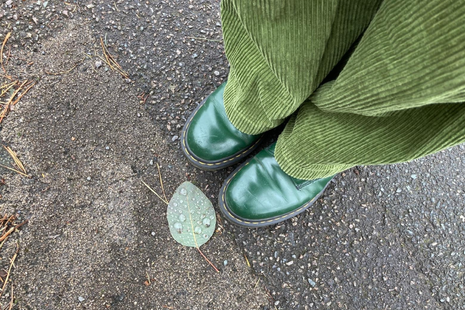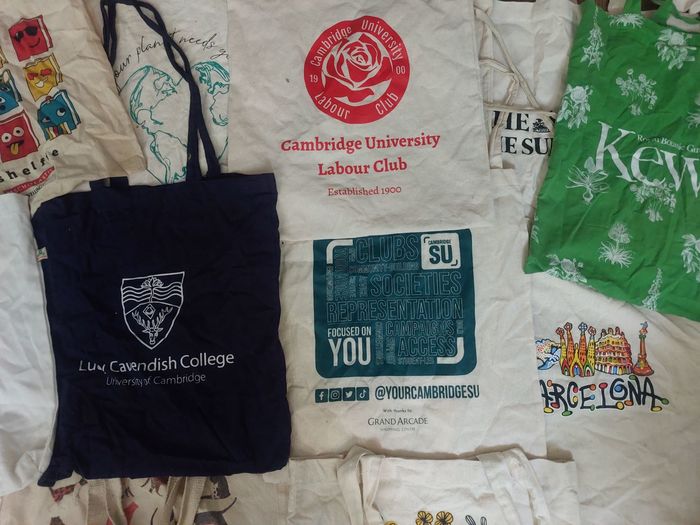Putting the ‘plastic’ in ‘pleather’: the great contradiction of vegan leather
Even for vegetarians, leather tends to beat its ‘vegan alternatives’ on sustainability, argues Elsie McDowell

After years of eyeing up Doc Martens, and perhaps fuelled by the excitement of my first ever student loan payment, I stumbled across the best second-hand find of my life. Green Doc Marten boots, brand new in the box, for £70 cheaper on Depop than they were anywhere else. I showed them excitedly to anyone I could get to listen. However, on showing them to my boyfriend, he asked “Should you really be wearing leather as a vegetarian?”. Almost a year later, after many a long discussion, I finally have an answer.
I have been a vegetarian since I was thirteen. Initially, I gave up meat for environmental reasons, but, over the years, my vegetarianism also became an ethical objection to the mistreatment of farm animals. To be perfectly honest, like many other decisions I made at that age, becoming a vegetarian was not necessarily the most thought-out decision of my life. So, it wasn’t until six years later that I really began to think about the implications of wearing animal products.
At first, I felt a bit like I’d failed as a vegetarian, especially since I had thought that I was doing a good thing by buying my boots second-hand. But as I researched the issue more, I realised that leather is often far more durable than its “vegan” alternatives.
“Pleather is often far worse for the environment than traditional leather”
Vegan leather, sometimes referred to as ‘pleather’, has become an increasingly popular material of choice for large and small fashion brands alike, reacting to shifts in consumer behaviour towards products that seem more sustainable. At face value, vegan leather should be a simple swap for anyone concerned with their lifestyle’s impact on the planet and its animals. However, vegan leather is often made from plastic, which comes with its own list of environmental concerns. Considering plastic’s fossil fuel origins, the release of microplastics during pleather’s use, and its inability to decompose at the end of its lifecycle, pleather is often far worse for the environment than traditional leather.
But what about the ethical dimensions of leather? More than a billion cows – and other animals – are slaughtered for their skins annually. That said, these animals tend to be ones that were farmed for meat consumption anyway. So, as long as the quantity of cattle used for meat consumption stays far greater than that used to supply leather, the reduction of leather production will have little impact on the overall number of livestock farmed and killed.
The ethical implications of buying leather, therefore, are not clear-cut. The environmental implications are far more straightforward. Although the production of leather is associated with deforestation and waterway pollution as a result of the chemicals used to treat it, leather does tend to be more durable and less damaging when disposed of than pleather.
“As long as the quantity of cattle used for meat consumption stays far greater than that used to supply leather, the reduction of leather production will have little impact on the overall number of livestock farmed and killed”
Not all vegan leathers, however, are fully plastic. Innovative designers are using a diverse array of plant-based materials for their vegan leather, including mushrooms, pineapple, and cacti. That said, most of these plant-based leathers are combined with plastic when used to make clothes and shoes, meaning they face the same issues when used and disposed of as pleather – albeit to a lesser extent.
It is not inconceivable that innovations in the fashion industry over the next decade will mean that fully plant-based leathers will be able to rival the longevity of traditional leather. Until then, the least environmentally damaging way to consume leather will be to buy it, and its plastic/plant-based alternatives, second-hand.
However, as my boyfriend pointed out in our original conversation, like all second-hand goods, used leather still relies on the production of – and then often overconsumption of – new leather products in the first place. This is true; buying second-hand leather will not single-handedly “fix” the environmental crisis, nor will any individual action for that matter. Still, buying leather goods second-hand, caring for them properly, and extending their life for as long as possible is the best option in a broken system.
Ultimately, as a conflicted vegetarian and environmentalist, there is no easy answer to my initial doubts about my now very well-loved and worn Doc Martens. Hopefully, my boots will be with me for many more years. Because I am so attached to them, I will seek to repair them when they do eventually get closer to the end of their life cycle.
I do not want to come across as preachy. If anything I want to show that even as someone who tries to reduce the reliance of my lifestyle on animal products, I recognise that for now, leather is the best bet for certain items when it comes to the environmental impact of the life cycle of our shoes.
 News / SU reluctantly registers controversial women’s soc18 December 2025
News / SU reluctantly registers controversial women’s soc18 December 2025 Features / Should I stay or should I go? Cambridge students and alumni reflect on how their memories stay with them15 December 2025
Features / Should I stay or should I go? Cambridge students and alumni reflect on how their memories stay with them15 December 2025 News / Dons warn PM about Vet School closure16 December 2025
News / Dons warn PM about Vet School closure16 December 2025 News / Cambridge study finds students learn better with notes than AI13 December 2025
News / Cambridge study finds students learn better with notes than AI13 December 2025 Comment / The magic of an eight-week term15 December 2025
Comment / The magic of an eight-week term15 December 2025










